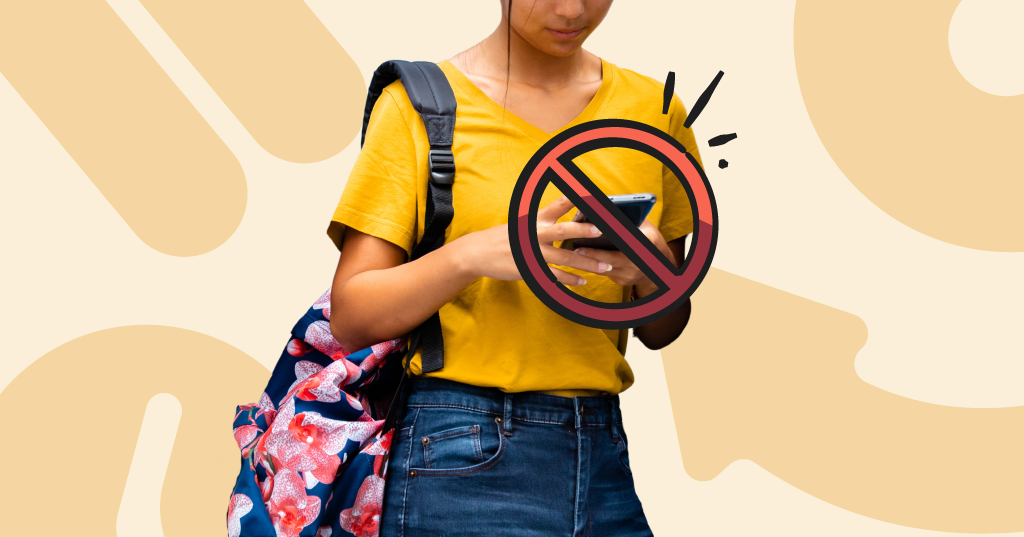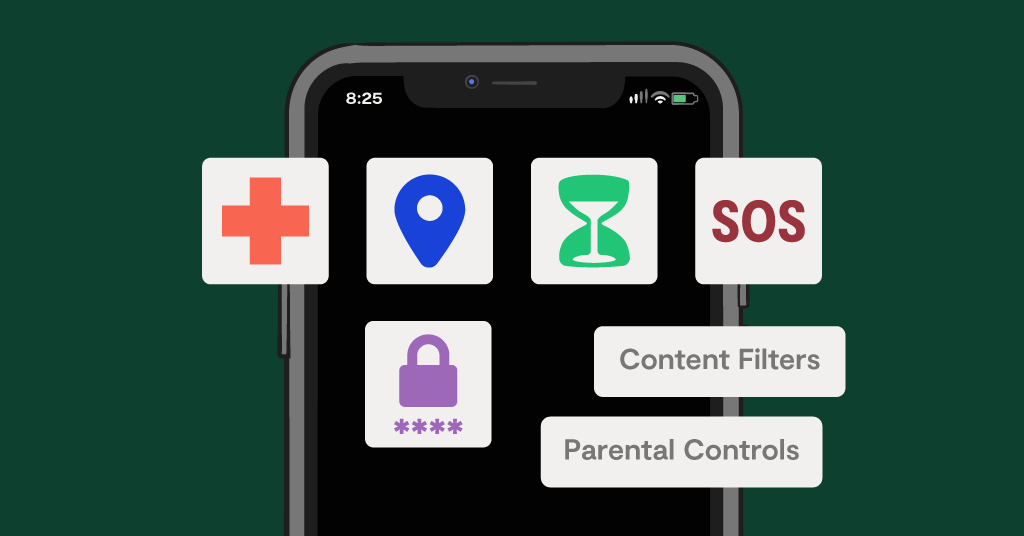Every day, more and more schools and districts are announcing they’re banning cellphones in K–12 classrooms. For many parents and educators, this is a wished-for watershed moment years in the making, while other families and kids argue it’s an overstepping of boundaries. But no matter which side you’re on, it’s important to know what these bans are going to look like in practice, because they vary in implementation.
“Ban” isn’t even the most appropriate word — schools are seeking to limit access in various ways throughout the day, but an outright “ban” of devices is almost never what’s happening. In this post, we’ll discuss some of the different ways actual districts are limiting phone use in schools.
Why Cellphone Bans Are Happening
In the ‘80s and 90s, kids only had a few options if they didn’t want to pay attention: reading paperbacks under your desk, writing paper notes, staring at the window, and sleeping. Today, kids are distracted by the supercomputer in their pockets that can enable them to:
- Message friends
- Post on social media
- Watch Netflix
- Play video games
- Take discreet photos
- Listen to music with one earbud in
- Plan meetups in the bathroom
- Arrange illicit activities like fighting or vaping in bathrooms
Even if they’re not actively on their phone, kids are being inundated with notifications as frequently as every few minutes, leading to near-constant attention diversion. And this, in turn, affects learning, classroom behavior, and discipline.
Different Ways Schools Handle Phone Bans, Ranked by Effectiveness
Honor code/acceptable use policy
Most schools have long forbidden the use of cellphones in class without permission, so technically there’s always been a ban on them in academic settings — it’s just nearly impossible to enforce. Requiring kids to keep phones neatly tucked away during instruction just doesn’t work. Teachers end up becoming phone police and instead of focusing on educating, they’re constantly telling students to put them away, threatening to confiscate them, or actually confiscating them. Every time this happens, both the teacher and the students get interrupted from the lesson. It’s a vicious cycle, and for educators it’s essentially a never-ending game of whack-a-mole.
Phone lockers
Another option is a box placed in the front of a classroom that has slots for every child’s phone. In these schools, students enter and place their phones in before sitting down, and teachers will count the number of phones to make sure they match the number of kids in desks. The issue with phone lockers is that some kids may place “dummy” phones (fake phones or old ones they don’t use) into their slot so they can keep their actual phone on their person. Schools with phone lockers generally allow students to access their devices between classes and at lunch, since there’s not an easy way to block use during this time.
Pouches
Lockers are clunky and some parents object on the basis that kids are losing access to their personal property and expensive digital devices. Enter pouches like Yondr, which attempt to solve this issue. Kids are issued a Yondr pouch and place their phone into it when they get to school. It magnetically locks, keeping the phone out of sight and out of mind. But instead of placing it at the front of the classroom, students keep it with them until they head home. At the end of the day (or between classes or at lunch, depending on the school’s policy), kids can unlock the pouch at special magnetic unlocking stations.
As for effectiveness, pouches have a good chance of working, although a quick Google search shows that kids are already sharing ways to order third-party unlocking magnets, damage the locks, and other ways to get to their phones.
Replacement phones
Starting this year at Eton, Britain’s most elite boarding schools, incoming 13-year-old students will be issued Nokia dumbphones that only call and text. Granted, this a prestigious private school and parents will have agreed to this strict policy, but it seems to be one of the strongest steps in the direction of an effective cellphone ban. Kids will still have the ability to communicate at any time — one of the biggest complaints from parents about bans — but they won’t have constant access to social media, addictive games, and a digital camera.
Reduce Distractions with Bark No Matter Your School’s Policy
At the end of the day, nearly everyone agrees that kids should be less distracted during the school day. That’s why the Bark Phone and the Bark app give parents the ability to lock down their child’s device for the hours they’re at school.
For example, from 8 a.m. to 3 p.m., you can block everything but educational apps, or make it talk and text only to emergency contacts. This way, whether their phone is in a pouch or just in their bookbag, they won’t be tempted to try and get online or be pestered with a million notifications.
All these new rules are a brave new world, but they’re a step in the right direction for our kids as we aim to reprioritize education and socialization during the school year.
Read more
Bark helps families manage and protect their children’s digital lives.






